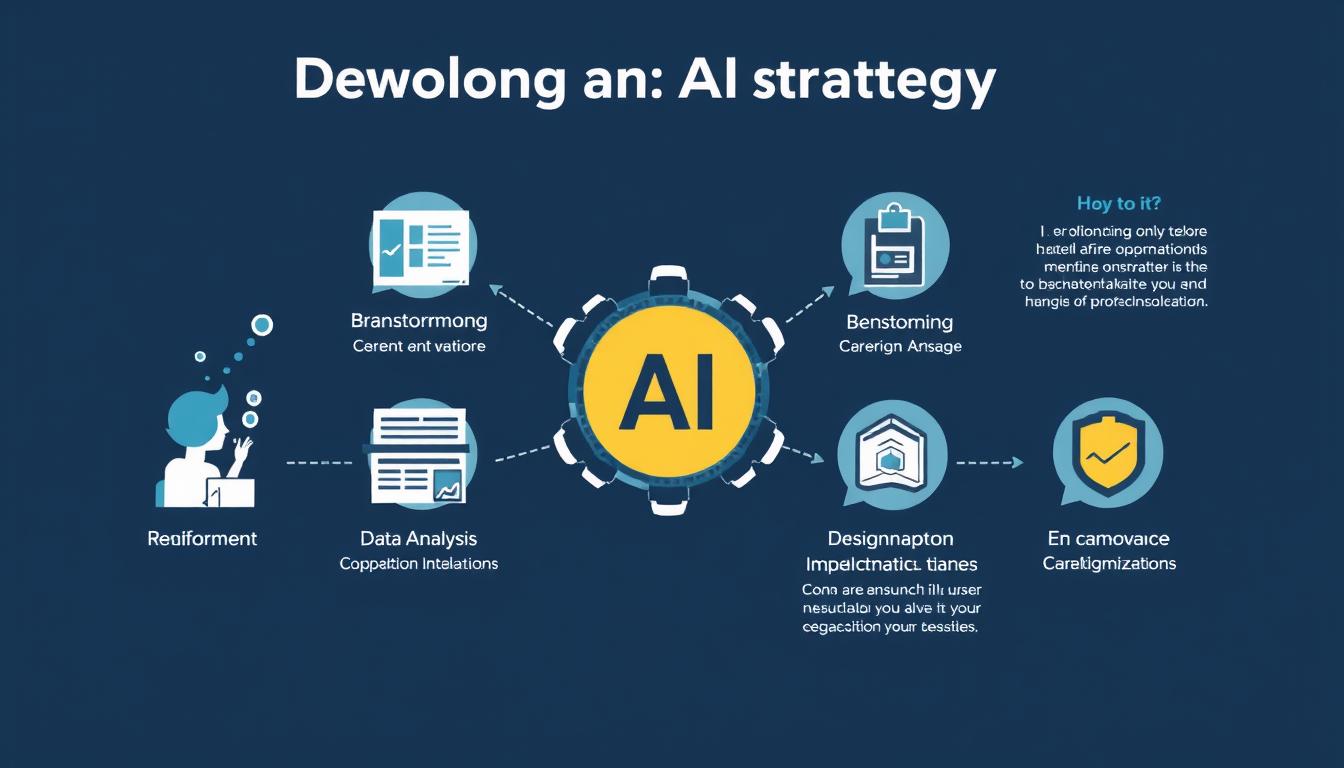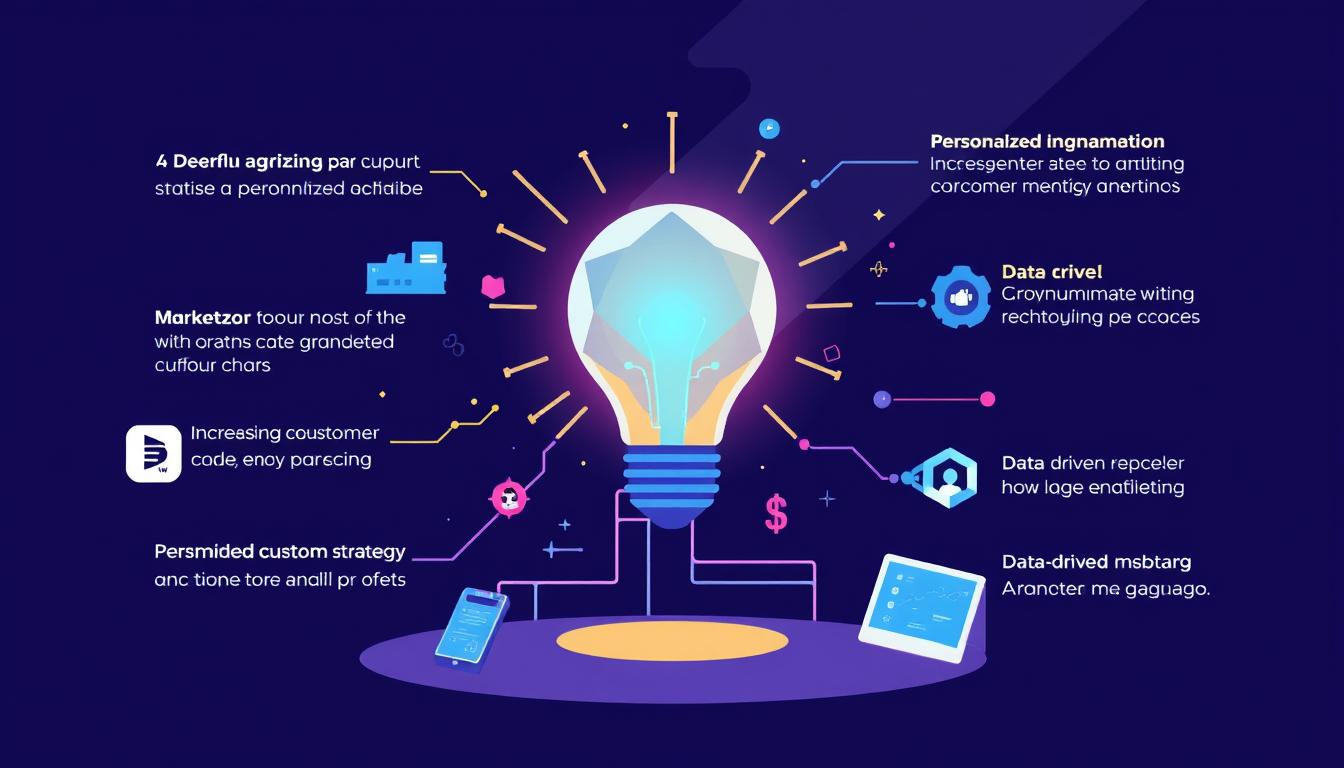The financial sector is undergoing a significant transformation with the adoption of artificial intelligence in financial forecasting. In 2023, financial services allocated roughly $35 billion towards AI projects, signaling a substantial shift towards technology-driven forecasting.
This investment is expected to yield significant returns, with projections estimating the global AI finance market to reach $190.33 billion by 2030, growing at a CAGR of 30.6%. The integration of AI is creating more accurate and efficient financial predictions, enabling businesses to process vast amounts of data and generate valuable insights.
Key Takeaways
- The financial industry is experiencing a revolutionary transformation with AI-driven forecasting.
- AI-powered models are helping businesses automate operations and generate personalized insights.
- Financial institutions are rapidly adopting AI technologies to gain competitive advantages.
- The global AI finance market is expected to reach $190.33 billion by 2030.
- AI is reshaping traditional financial forecasting methods, creating more accurate predictions.
The Rise of AI in Financial Forecasting
The rise of AI in financial forecasting is marked by its ability to process vast amounts of data, providing insights that lead to more informed decisions. This technological advancement is transforming the finance sector by enhancing the accuracy of financial models and forecasts.
Current Market Statistics and Growth Projections
NVIDIA’s financial services survey highlights the significant impact of AI on financial institutions, with 86% experiencing a positive impact on their revenue and 82% observing a reduction in costs. This positive outlook has led 97% of companies to plan increased investments in AI technologies. Moreover, 75% of financial service companies consider their AI capabilities to be industry-leading or in the middle of the pack.
- 86% of financial institutions report a positive revenue impact due to AI.
- 82% observe a reduction in costs.
- 97% plan to increase AI investments.
Why Financial Institutions Are Embracing AI
Financial institutions are rapidly adopting AI to overcome the limitations of traditional methods. The key drivers include:
- The ability of AI to process massive datasets, providing deeper insights for more informed decisions.
- Cost reduction and operational efficiency through automation of tasks like data collection and analysis.
- Competitive pressure, as early adopters demonstrate improved forecasting accuracy and risk management.
- Easier regulatory compliance through continuous monitoring and issue flagging.
By embracing AI, financial institutions are not only improving their forecasting capabilities but also enhancing their overall operational efficiency and compliance management.
What is AI Financial Modeling and Forecasting?
AI is transforming financial forecasting by introducing dynamic and adaptive modeling capabilities. Financial software solutions simplify tasks like company valuation and risk assessment. AI adoption in financial modeling enables predictive models that reveal unseen patterns and revenue drivers, accelerating mundane tasks.
Defining AI-Powered Financial Forecasting
AI-powered financial forecasting uses data and advanced algorithms to predict future financial outcomes. This approach differs significantly from traditional methods that rely on static models and historical data. Our team at Coherent used AI to help a global tech company understand key performance indicators impacting their revenue and streamlined their forecasting efforts.
How AI Transforms Traditional Financial Methods
Traditional financial methods typically rely on historical data analyzed through static models. AI transforms these approaches by introducing dynamic modeling capabilities that continuously incorporate new data and adjust forecasts in real-time. Key benefits include:
- Automation of data collection and preprocessing, reducing human error.
- The ability to evaluate multiple scenarios and their probabilities simultaneously.
- Integration of alternative data sources, such as satellite imagery and social media sentiment.
By adopting AI in financial modeling, businesses can achieve greater accuracy in their financial forecasting and analysis. This enables more informed decision-making and strategic planning.
Key Applications of AI in Financial Forecasting
With AI, financial forecasting is becoming more precise, helping businesses navigate complex market dynamics. AI’s capabilities are being leveraged across various financial domains to enhance forecasting accuracy and support strategic decision-making.
Financial Planning and Analysis (FP&A)
AI is transforming FP&A by enabling more accurate financial projections and scenario planning. By analyzing historical data and market trends, AI models help businesses create more reliable forecasts, facilitating better resource allocation and strategic planning.
Risk Management and Credit Assessment
In risk management and credit assessment, AI algorithms analyze vast datasets to identify potential risks and predict creditworthiness. This enables financial institutions to make more informed lending decisions and mitigate potential losses.
Fraud Detection and Prevention
AI-powered systems are being used to detect and prevent financial fraud by analyzing transaction patterns and identifying anomalies. These systems can flag suspicious activities in real-time, helping prevent financial losses.
Portfolio Management and Stock Prediction
AI is used in portfolio management to predict stock prices and optimize investment strategies. By analyzing market data and trends, AI models help investors make more informed decisions and maximize returns.
Insurance Underwriting and Real Estate Investment
In insurance underwriting, AI enhances risk assessment and pricing accuracy by analyzing diverse data sets, including data from IoT devices and other sources. This allows insurers to offer personalized policies. In real estate, AI forecasting models analyze property values and neighborhood trends to identify promising investments, improving investment decisions and risk management.
How AI in Financial Modeling Works
The integration of AI in financial modeling revolutionizes how businesses forecast their financial futures. AI-driven financial modeling involves several critical steps, from data collection to model deployment and continuous monitoring.
Data Collection and Preparation
The foundation of any AI financial model is data. The process begins with gathering relevant financial data, which can include historical stock prices, economic indicators, and company performance metrics. This data is then cleaned and prepared to ensure accuracy and consistency, a crucial step for the success of the AI model.
Model Choice, Training and Evaluation
Once the data is prepared, the next step is to choose an appropriate AI model for financial modeling. The chosen model is then trained on the historical data to learn patterns and relationships. The model’s performance is evaluated using various metrics to ensure its accuracy in making financial predictions.
Deployment, Monitoring and Continuous Development
After optimization, the AI models are deployed into production environments, where they can make real-time predictions based on live data. Continuous monitoring is essential to adapt to changes in financial markets and maintain the model’s accuracy. Effective AI financial systems incorporate continuous learning, refining their predictions with new data.
| Stage | Description | Key Activities |
|---|---|---|
| Data Collection and Preparation | Gathering and cleaning financial data | Data sourcing, cleaning, and formatting |
| Model Choice, Training, and Evaluation | Selecting and training the AI model | Model selection, training, and performance evaluation |
| Deployment, Monitoring, and Continuous Development | Deploying the model and ensuring its ongoing accuracy | Model deployment, continuous monitoring, and updating with new data |
AI Technologies Used in Financial Modeling

AI is transforming financial modeling by enhancing data analysis, improving forecasting accuracy, and streamlining processes. Various AI technologies are being utilized to achieve these improvements.
Machine Learning and Deep Learning
Machine learning and deep learning algorithms are crucial in financial modeling, enabling the analysis of complex data sets and the identification of patterns that may not be apparent to human analysts. These technologies improve forecasting accuracy and support informed decision-making.
Natural Language Processing (NLP)
NLP is used in financial modeling to analyze and interpret large volumes of unstructured data, such as financial news and reports. This helps in understanding market sentiment and making predictions based on textual information.
Predictive Analytics and Big Data
Predictive analytics, combined with big data, enables financial institutions to forecast future trends and make proactive decisions. This involves analyzing historical data and using statistical models to predict future outcomes.
Quantitative Trading and RPA
Quantitative trading leverages AI algorithms to execute trades based on mathematical models, enhancing automation and reducing bias. Robotic Process Automation (RPA) streamlines financial modeling workflows by automating repetitive tasks, thus improving efficiency and accuracy.
By integrating these AI technologies, financial institutions can significantly enhance their financial modeling capabilities, leading to better market analysis and more informed investment decisions.
Tech Stack for AI Financial Forecasting Systems

The use of advanced technologies and tools is revolutionizing the field of financial forecasting, allowing for more precise and reliable predictions.
Data Storage and Processing Tools
Effective data storage and processing are crucial for AI financial forecasting. Technologies such as relational databases and NoSQL databases are used to store large volumes of financial data. Cloud-based storage solutions like Amazon S3 and Google Cloud Storage provide scalability and flexibility.
Machine Learning Frameworks
Machine learning frameworks are the backbone of AI financial forecasting models. Popular frameworks include TensorFlow, PyTorch, and Scikit-learn. These frameworks enable the development of sophisticated models that can analyze complex financial data and make accurate predictions.
Development and Deployment Infrastructure
The development and deployment of AI financial forecasting models rely on a robust infrastructure. Containerization technologies like Docker and orchestration platforms like Kubernetes ensure consistency across development and production environments. Cloud-based machine learning platforms such as AWS SageMaker, Google AI Platform, and Azure Machine Learning simplify the deployment and scaling of financial forecasting models.
Benefits of AI in Financial Forecasting
The integration of AI in financial forecasting has revolutionized the way businesses predict future trends and make informed decisions. AI transforms financial models with real-time data and predictive analytics, enabling quick responses to market changes. This capability is particularly valuable in high-frequency trading and portfolio management, where timely decisions can significantly impact outcomes.
Enhanced Precision in Predictive Analysis
AI-powered financial forecasting systems can process vast amounts of data to make precise predictions. By analyzing historical trends and real-time market conditions, AI enhances the accuracy of financial forecasts. This precision helps businesses avoid costly mistakes and capitalize on emerging opportunities. With AI, financial institutions can refine their predictive models continuously, ensuring that their forecasts remain reliable and relevant in a rapidly changing economic landscape.
Operational Efficiency and Time Savings
The automation of financial forecasting through AI significantly reduces the time spent on manual data analysis and report generation. By streamlining these processes, financial professionals can focus on higher-value tasks such as strategic planning and decision-making. AI-driven forecasting tools also minimize the risk of human error, further enhancing operational efficiency. As a result, businesses can respond more quickly to market changes and make informed decisions based on the most current data.
Real-Time Analysis and Decision Making
AI enables real-time analysis and decision-making by processing real-time data streams and updating predictions accordingly. This capability allows financial decision-makers to respond promptly to market changes and emerging opportunities. Automated alerts notify stakeholders of deviations from expected forecast metrics, facilitating proactive intervention. In trading environments, AI’s real-time analysis can identify market inefficiencies and execute transactions in milliseconds, capturing value that would be impossible for human traders to achieve manually.
Challenges and Limitations of AI Financial Forecasting
Despite the numerous benefits of AI in financial forecasting, several challenges and limitations hinder its widespread adoption. The effectiveness of AI financial forecasting systems heavily relies on the quality and integration of data.
Data Quality and Integration Issues
One of the primary challenges is ensuring the accuracy and consistency of data across different sources. FP&A professionals often face tight deadlines, which leaves them with limited time to consolidate data, analyze trends, and validate assumptions. This pressure can compromise the quality of insights, making it essential to address data quality and integration issues.
Security, Privacy and Compliance Concerns
AI financial forecasting systems also raise significant security, privacy, and compliance concerns. Organizations must ensure that sensitive financial data is protected from unauthorized access and breaches. Moreover, they must comply with relevant regulations and standards, which can be complex and time-consuming.
Implementation and Adoption Barriers
Several barriers can impede the implementation and adoption of AI financial forecasting systems. These include the need for specific skills and expertise, high development and maintenance costs, cultural resistance to change, and technical challenges related to integration with existing systems. To overcome these challenges, organizations must develop a clear strategy and provide adequate training to their team members.
Step-by-Step Guide to Implementing AI in Your Financial Forecasting
Businesses are now turning to AI to enhance the accuracy and efficiency of their financial forecasting. Implementing AI in financial forecasting is a strategic process that involves several key steps, from assessing organizational needs to scaling the implementation.
Assessing Your Organization’s Needs
The first step is to assess your organization’s specific needs and identify areas where AI can add the most value. This involves analyzing your current financial forecasting processes, understanding the challenges faced by your team, and determining how AI can address these issues. Consider the types of data you have available and how they can be leveraged.
Choosing the Right AI Tools and Platforms
Once you’ve identified your needs, the next step is to choose the right AI tools and platforms that align with your financial planning requirements. Look for solutions that can handle large volumes of data and provide advanced analytics capabilities. It’s crucial to select tools that integrate well with your existing systems to minimize disruptions and ensure a seamless implementation process.
Testing and Validating Your AI Models
Before fully implementing AI in your financial forecasting, it’s essential to test and validate your AI models. Start with a pilot project focused on a specific area, such as revenue forecasting or expense management. Measure the performance of the AI model against your traditional forecasting methods, focusing on metrics like accuracy and time savings. Gather feedback from your team to identify any areas for improvement.
Scaling Implementation and Measuring Success
After validating the success of your AI models in the pilot project, you can begin scaling the implementation across other areas of your financial forecasting. Develop a phased rollout plan to gradually expand AI capabilities, ensuring that your team is adequately trained and supported throughout the process. Continuously monitor the performance of the AI systems and make adjustments as needed to optimize their effectiveness.
Top AI Financial Forecasting Tools and Platforms
Financial forecasting is being revolutionized by AI, offering businesses more accurate and agile planning solutions. The market now offers a variety of AI financial forecasting tools catering to different business sizes and needs.

Enterprise Solutions
Large enterprises often require comprehensive and integrated financial planning solutions. Tools like Vena, Cube, and Anaplan provide advanced AI-driven financial forecasting capabilities, enabling these organizations to make data-driven decisions. These platforms offer robust data analysis and planning features that support complex financial models.
Mid-Market Options
For mid-sized businesses, solutions like Workday Adaptive Planning and Jedox offer scalable AI financial forecasting tools. These platforms provide a balance between functionality and cost, making them ideal for growing companies. They enable finance teams to streamline their forecasting processes and improve financial planning.
Solutions for Small Businesses
Small businesses can now leverage AI for financial forecasting with platforms like Jirav and Mosaic. These tools are designed to be user-friendly and affordable, providing solutions that help small finance teams create accurate financial forecasts without needing extensive technical expertise. They offer features like revenue forecasting, expense planning, and cash flow projections.
Future Trends in AI Financial Forecasting
Financial forecasting is on the cusp of a revolution, driven by emerging trends in AI. As we look to the future, it’s clear that AI will continue to transform the financial industry, making forecasting more accurate and efficient. The increasing reliance on data and advanced modeling techniques is set to redefine financial forecasting.
Emerging Technologies and Approaches
New technologies and methodologies are emerging to further enhance AI’s capabilities in financial forecasting. Some of these include:
- Advanced machine learning algorithms that can process vast amounts of data more efficiently.
- The integration of Environmental, Social, and Governance (ESG) factors into financial models.
- The development of autonomous finance systems that can predict and adjust financial outcomes automatically.
These emerging technologies are expected to significantly impact how financial forecasting is conducted, making it more predictive and proactive.
Predicted Industry Developments by 2030
By 2030, AI is expected to be ubiquitous in financial forecasting, with significant developments anticipated:
- AI financial forecasting will become a standard practice across the financial industry.
- 95% of financial models are anticipated to incorporate ESG parameters, highlighting the growing importance of sustainability.
- The demand for professionals skilled in financial modeling and AI is expected to rise, necessitating new training programs.
These developments underscore the need for financial institutions to stay ahead of the curve by adopting AI technologies and training their workforce accordingly.
Conclusion
The integration of AI in financial forecasting has revolutionized the field, transforming it into a more precise science. AI-powered financial modeling and forecasting have become crucial for businesses, enabling them to make informed decisions based on data-driven insights. By leveraging AI, organizations gain a competitive edge through more accurate forecasting and faster decision-making. While challenges persist, the future of financial modeling will see deeper AI integration, with systems predicting outcomes and recommending strategies. This shift will require financial professionals to develop skills to work effectively with AI tools.









Comments are closed